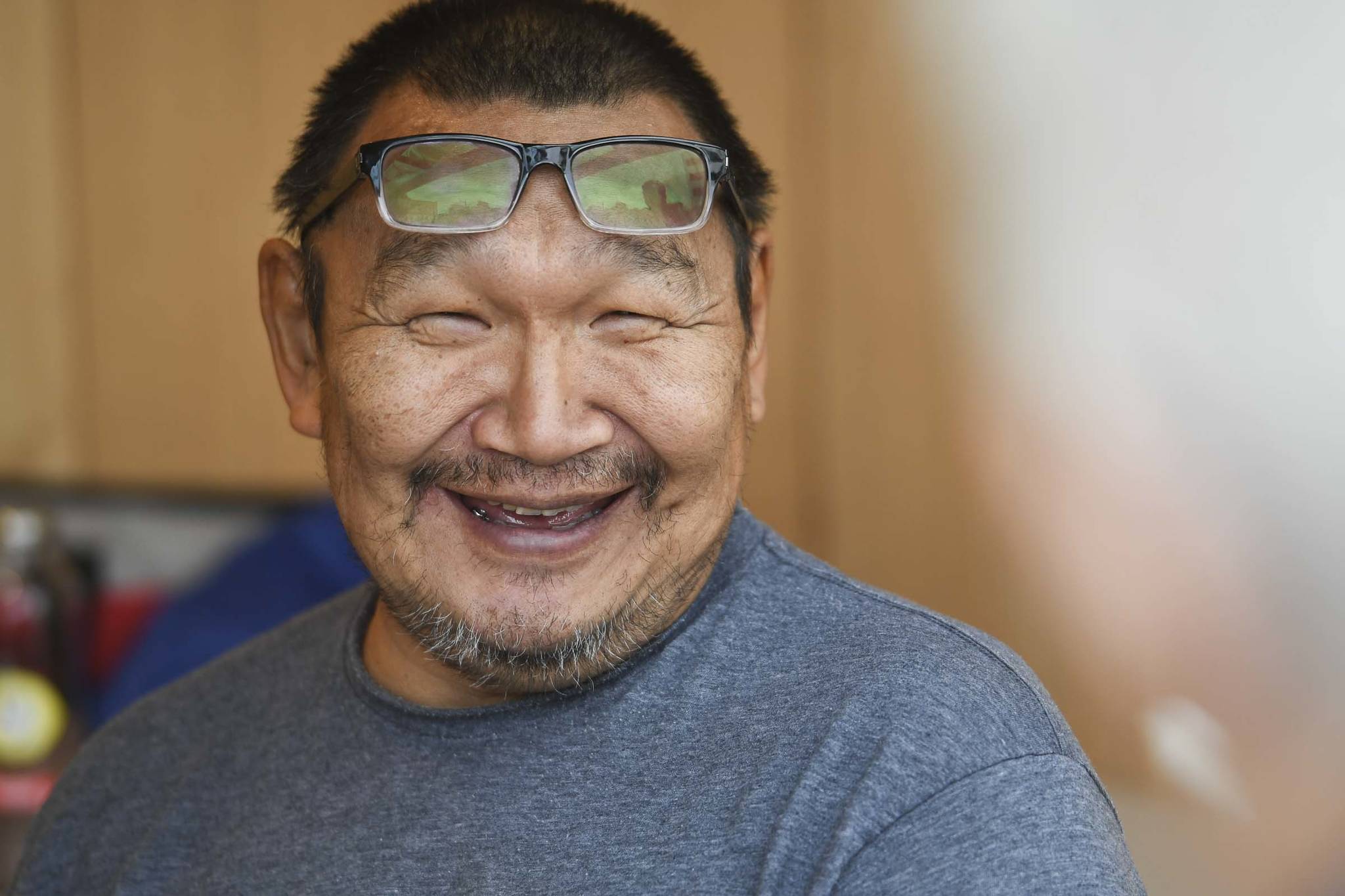Yup’ik artists are visiting Sealaska Heritage Institute this week, and they brought dance and walrus skin with them from the far western reaches of Alaska.
John Waghiyi Jr. and his wife, Arlene Annogiyuk Waghiyi, are artists from Savoonga, which is a city on St. Lawrence Island, and through Thursday, they are artists in residence at Sealaska Heritage Institute’s Walter Soboleff Building.
Wednesday, the Waghiyis will dance in the Shuka Hít clan house during a free, public event at noon. On Tuesday, John Waghiyi Jr. worked on a walrus-skin blanket outside the Soboleff building.
“If we don’t teach it, it’s going to die with us,” Waghiyi said of walrus skin sewing.
He said while some indigenous peoples of Russia practice the art form, he isn’t aware of it being done in North America outside of St. Lawrence Island.
“When I’m gone, my grandchildren may have to go to Russia to learn the art,” Waghiyi said.
Exposure to an Alaska Native culture that isn’t common, let alone often part of Juneau’s Northwest Coast Arts-intensive scene, was a goal of bringing the Waghiyi’s to town, said SHI President Rosita Worl in an email.
“An important focus of Sealaska Heritage Institute’s mission is to promote cross-cultural understanding and to support cultural diversity, which includes indigenous peoples from other regions of the state,” Worl said. “Additionally, SHI promotes Alaska Native arts through its exhibitions and advocacy efforts to ensure that Alaska Natives have access to the natural resources on which they depend and utilize in their arts. In this case, we also wanted to educate people about the Native use of walrus ivory to support their cultural and subsistence lifestyle, which is not endangered as are elephants. We also commissioned John to make a walrus blanket for our blanket toss to use in our traditional games.”
Blanket toss is an Alaska Native game that is similar to trampoline gymnastics, but with human power and an animal skin blanket used in place of a trampoline. The blankets are also used for cultural celebrations such as whaling festivals.
Waghiyi said walrus is primarily harvested for food. He said skin and ivory are useful byproducts of that.
“Ivory is just a vessel to supplement our subsistence way,” Waghiyi said.
Worl said the Waghiyis brought her walrus maktak — a dish made of skin and blubber — which is one of her favorite foods.
The walrus skin Waghiyi was working with this week came from a walrus he and his late uncle harvested “a couple of years ago,” Waghiyi said. He said the ultimate goal for the skin was to produce an 11-foot-by-11-foot blanket from skin that’s about a half-inch thick.
“For skin boat construction, for sewing, they use whale sinew from either bowhead whale or gray whale, and they braided the sinew specifically for skin boat construction,” Waghiyi said.
For his blanket Waghiyi used a synthetic thread and metal needle to pull together halves of the blanket.
He said he hoped to be done with the blanket by Thursday, but it took months of preparation to get the skin ready to become a blanket and once it’s done, all SHI will have to do to care for it is keep it in a cool place.
Waghiyi said sewing walrus skin is traditionally done by women, but he picked it up by being involved with skin boat construction.
Skin boats are exactly what they sound like — boats made of animal skin. Waghiyi, who was a whaling captain, said skin boats and sails have now mostly been replaced by metal skiffs, but he has sailed in skin boats.
“I’m used to working with walrus skin,” he said.

